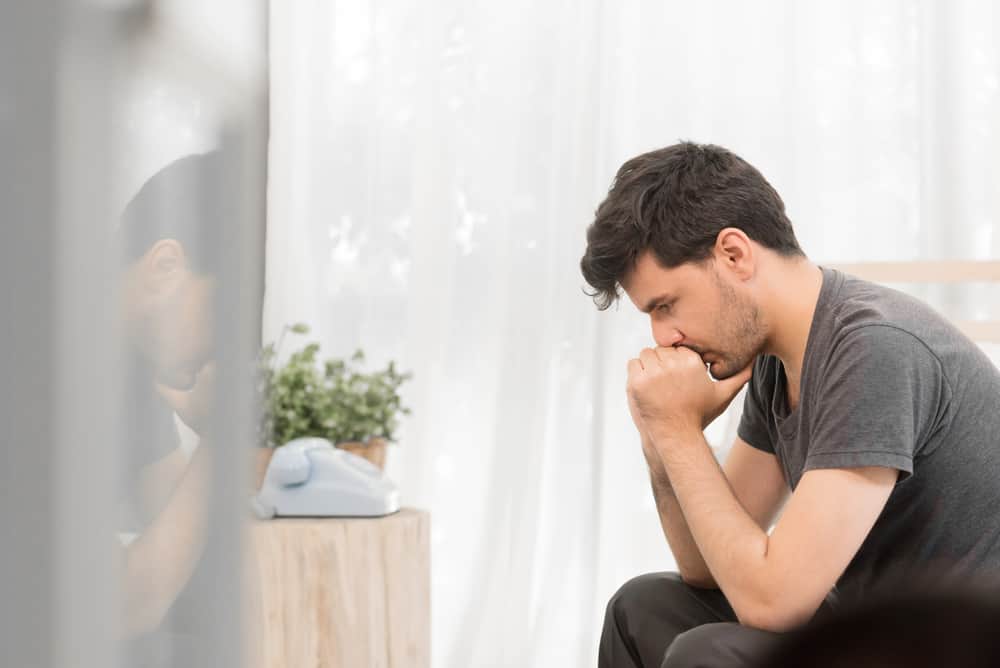Do you or someone you know suffer from anxiety? This week is Mental Health Week 2017 and is a great opportunity to familiarise yourself with what anxiety is and how it can be managed and treated.
While most of us go about our daily lives without running into too much stress, we often encounter situations that can make us feel quite uncomfortable. It may be a dog barking as you take a walk around your neighbourhood, or even sitting next to a stranger on your daily commute. These situations may be unpleasant, but we must ignore and overcome them to resume our daily living.
For many Australians, situations like these are so intimidating that they may be avoided completely. This can lead to the inability to complete day-to-day tasks and may prevent people from enjoying a normal, happy life. This fear and worry, and the harmful impact it has on day-to-day life is known as an anxiety disorder.
Anxiety disorders take many forms, such as Generalised Anxiety Disorder (GAD), Panic Disorder and Social or Specific Phobias. Sufferers of Obsessive-Compulsive Disorder (commonly referred to as OCD) and Post-Traumatic Stress Disorder (PTSD) may also experience anxiety. Anxiety disorders as a whole affect 14% of Australians each year and make up the most common area of mental illness.
Anxiety manifests itself as fear and worry and can bring on panic attacks, as well as a whole range of terrifying and uncomfortable physical symptoms. These symptoms can lead us to change our behaviour and avoid common situations that are otherwise harmless or adaptable.
A broad term, anxiety disorders take their form in a number of different ways:
Generalised Anxiety Disorder (GAD)
People with GAD experience persistent, intense worry or fear most of the time. This worry or fear is related to a number of facets of day-to-day life, such as personal health, family, work or finances, and can interfere with living a normal life.
Panic Disorder
Panic disorder is characterised by a sudden period of intense panic and fear, referred to as a panic attack. These sudden feelings of terror and discomfort are accompanied by physical symptoms. These symptoms may include chest pain or discomfort, heart palpitations or increased heart rate, difficulty breathing, feeling dizzy or lightheaded, sweating, hot or cold flushes, trembling or shaking, nausea and feeling detached from yourself or your surroundings.
Social Phobias
People with social phobia experience intense fear and anxiety when subject to social (e.g. meeting new people) or performance (e.g. giving a speech) situations. Public situations and interactions may be avoided due to fear of embarrassment, humiliation, criticism or judgement. Alongside psychological and behavioural symptoms, sufferers of social phobia may also experience physical symptoms such as sweating, increased heart rate, feeling lightheaded, blushing, trembling, muscle tension and nausea or diarrhoea.
Specific Phobias
Specific phobias are characterised by an intense fear of certain objects, places or situations. For example, flying in an aeroplane or interacting with a specific type of animal. Many sufferers of specific phobias often describe the response as automatic and feel powerless to remain calm, despite understanding their response is irrational.
In addition to the above anxiety disorders, people who experience Obsessive-Compulsive Disorder or Post-Traumatic Stress Disorder may also encounter feelings of anxiety.
Obsessive-Compulsive Disorder (OCD)
Obsessive-compulsive Disorder involves the recurring or compulsive desire to carry out an action due to obsessive thoughts. OCD can significantly affect a person’s quality of life due to the need to repeat certain behaviours over and over, potentially interrupting day-to-day activities. For example, a person may have an exaggerated fear of household germs (an obsession), therefore wash their hands repeatedly throughout the day (resulting compulsive behaviour). Other common obsessions may include order, symmetry and routine – which may result in repetitive behaviours such as placing items in a certain way, counting or checking.
Post-Traumatic Stress Disorder (PTSD)
Post-Traumatic Stress Disorder may develop in some people following a traumatic experience or event. The trauma may have occurred to the person themselves, someone they care for or someone in proximity to them. An example of such an event is a car accident. PTSD is associated with flashbacks and reliving the event, feelings of anxiousness and being unable to relax due to fear of danger, and avoiding anything related to the event. Sufferers of PTSD may also feel emotionally numb and detach themselves from family, friends or regular activities.
Strategies For Managing Anxiety
The good news is anxiety disorders are highly treatable. With the right support, people can learn to overcome their anxieties and resume living a healthy and meaningful life. Here are some strategies for managing anxiety on a daily level:
– Breathing exercises: including techniques such as abdominal breathing and yoga breathing can help you to focus on your breath and relax.
– Healthy sleeping pattern: Try your best to wake up and go to sleep at fixed times each day, ensuring you are not getting too much or too little sleep.
– Good nutrition: Eating a healthy balanced diet is vital for good health, not just physically but mentally as well. Consuming nutritious foods can increase your energy levels and improve your overall sense of wellbeing.
– Exercise: Take some time each day to do some exercise you enjoy. The benefits of exercise for anxiety are enormous, including improved mood via the release of endorphins, improved energy levels and the promotion of good sleep. Mental and physical health go hand in hand.
– Mindfulness meditation: being fully present in the moment and not overly reactive to thoughts or emotions can help you to relax the body and mind. A number of fantastic smartphone applications for mindfulness meditation are available online.
– Take time out to relax: Activities such as yoga, reading, taking a warm bath or spending time in nature can help you to lower stress and feelings of anxiety.
– Have fun: Remember to do activities you enjoy and that make you feel good! These may include spending time with friends and family, playing sport or going on holiday.
– Positive attitude: A positive mind-set can go a long way. Don’t be too hard on yourself and remember that you cannot control everything. Go with the flow.
If you are still finding it difficult to manage your anxiety, then the Blissiree Pty Ltd can help get you back to a state of positive mental health and living life to your full potential.



